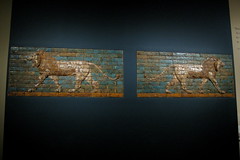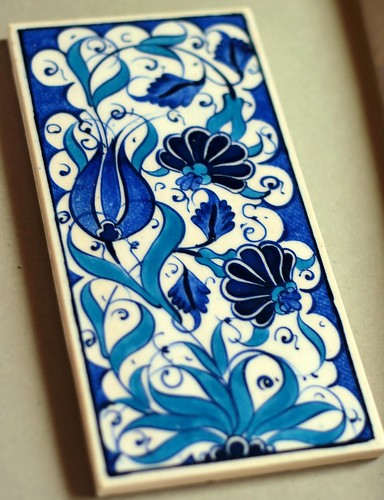(http://www.flickr.com/photos/kimbar/)
The use of glazing in pottery appears to have started in about 1500 BC. Prior to that, brickwork had been glazed and used as a form of decoration or ornamentation in architectural design.
It's generally recognised that the use of glazing in this way reached its height in 6th century Babylon in the palace of Nebuchadnezzar. The glaze and decorative works were truly impressive.
It was in about the 1st century BC that glazed pottery began to be produced in the Middle East. Possibly it was the Egyptians who started
making glazed pottery.
The use of glazing in pottery appears to have started in about 1500 BC. Prior to that, brickwork had been glazed and used as a form of decoration or ornamentation in architectural design.
It's generally recognised that the use of glazing in this way reached its height in 6th century Babylon in the palace of Nebuchadnezzar. The glaze and decorative works were truly impressive.
It was in about the 1st century BC that glazed pottery began to be produced in the Middle East. Possibly it was the Egyptians who started
making glazed pottery.





![Reblog this post [with Zemanta]](http://img.zemanta.com/reblog_e.png?x-id=aa9a8f2e-b0d2-4cc8-a384-7bb5b5b012b0)


![Reblog this post [with Zemanta]](http://img.zemanta.com/reblog_e.png?x-id=93d9b5bd-52d7-4199-8660-638f73dadd0a)

